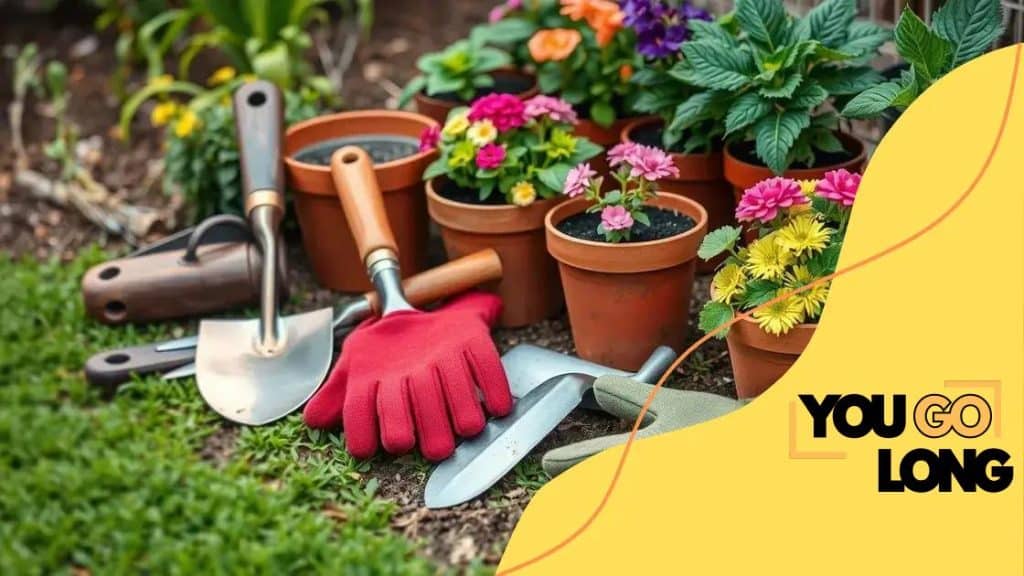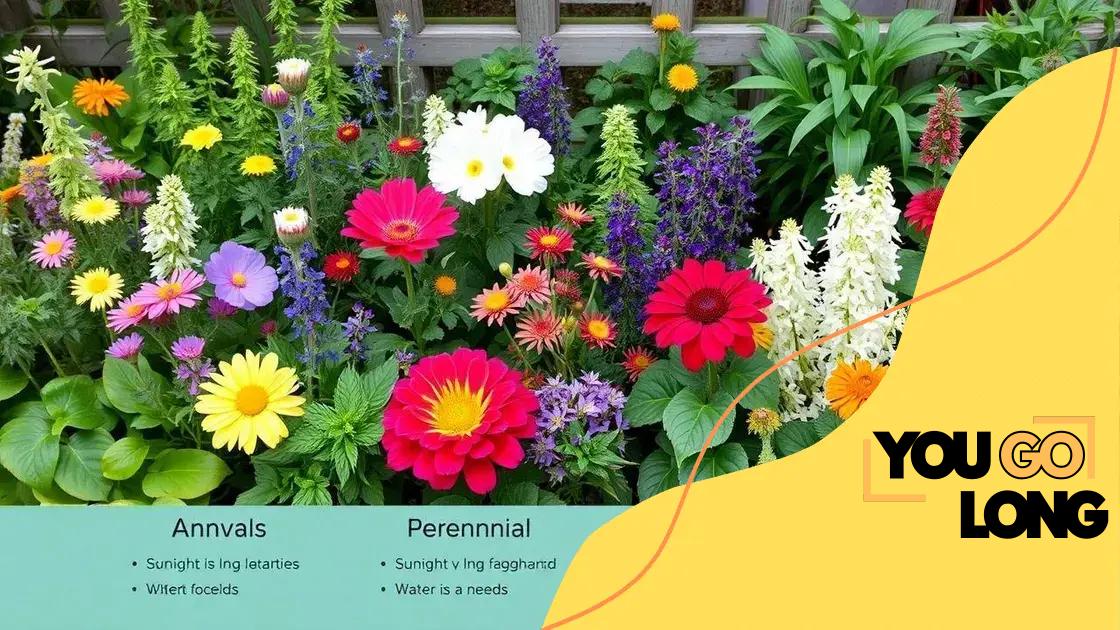Essential tools for beginner gardeners in 2025

Advertisement
Essential tools for beginner gardeners in 2025 include a hand trowel, pruning shears, and efficient watering systems, which help cultivate healthy plants and optimize garden productivity.
Essential tools for beginner gardeners in 2025 can make a world of difference in your gardening journey. Have you ever wondered which tools could truly elevate your success? Let’s dig into the essentials that will help you thrive in your gardening adventures.
Top gardening tools every beginner should have
When starting your gardening journey, having the right tools is essential. Top gardening tools every beginner should have can make your experience smoother and more enjoyable. Let’s explore which tools will help you start your garden with confidence.
1. Hand trowel
A hand trowel is a must-have for any gardener. It is perfect for digging, planting, and transferring soil. With its small size, you can easily maneuver it in tight spaces.
Advertisement
2. Pruning shears
Pruning shears are essential for keeping your plants healthy. Regularly trimming dead branches encourages new growth. Look for shears that are sharp and easy to handle.
- Maintain your plants effectively.
- Choose a size comfortable for your hands.
- Ensure they are kept sharp for clean cuts.
Another important tool is the gardening rake. This tool can help clear debris and level soil. You’ll find it useful when preparing your garden bed. Additionally, a gardening fork is invaluable for turning soil and mixing in nutrients. These tools work hand in hand to create a healthy garden ecosystem.
3. Watering can
Watering your plants consistently is crucial. A sturdy watering can will help you deliver the right amount of water. Choose one with a long spout for precision watering. Consider the size of your garden when selecting this tool.
Advertisement
In conclusion, having these top gardening tools will set you up for success. With the right equipment in hand, you will find it easier to nurture your plants and enjoy your gardening journey.
Choosing the right soil and fertilizers
Choosing the right soil and fertilizers is essential for a thriving garden. The right combination will help your plants grow healthy and strong. Understanding the different types of soil ensures that your plants receive the nutrients they need.
Types of soil
The most common types of soil include sandy, clay, and loamy soil. Each type has unique properties that affect drainage and nutrient retention. Sandy soil drains quickly but may lack nutrients. Clay soil retains moisture well but can become compacted. Loamy soil is a balanced mixture ideal for most plants.
- Test your soil before planting.
- Consider adding organic matter to improve soil quality.
- Use mulch to retain moisture and prevent weed growth.
When it comes to fertilizers, there are two main types: organic and synthetic. Organic fertilizers, such as compost and manure, improve soil structure while providing essential nutrients. Synthetic fertilizers offer specific nutrient ratios and act quickly, but they can also affect long-term soil health.
How to choose
To choose the right fertilizers, consider your plants’ specific needs. Conducting a soil test can help determine nutrient deficiencies. It’s also important to follow the instructions on the fertilizer package to avoid over-fertilization, which can harm your plants.
Ultimately, ensuring your soil and fertilizers are right for your garden will lead to a bountiful harvest and healthier plants.
Understanding plant types and their needs

Understanding plant types and their needs is crucial for any successful garden. Different plants have varying requirements for sunlight, water, and nutrients. Knowing these needs helps you select the right plants and care for them effectively.
Types of plants
The main categories of plants include annuals, perennials, and biennials. Annuals complete their life cycle in one season, while perennials return year after year. Biennials take two years to complete their life cycle.
- Annuals often require full sunlight.
- Perennials can thrive in various conditions.
- Biennials might need specific care during their second year.
Each plant type has specific light and water needs. For instance, full sun plants require at least six hours of sunlight daily, while shade plants thrive with minimal light. Understanding these needs ensures your plants grow healthy and strong.
Watering requirements
Watering is another critical aspect. Overwatering can lead to root rot, while underwatering may stress plants. It’s essential to know how much water your plants need. Use a moisture meter or stick your finger into the soil to test its dampness.
Additionally, consider the climate you live in when choosing plant types. Some plants are more suited for dry conditions, while others thrive in humid environments. By aligning your plant choices with your local climate, you’ll enhance your chances of success.
Efficient watering systems for your garden
Efficient watering systems for your garden are vital for keeping your plants healthy. Proper watering not only helps plants grow, but it also conserves water. Selecting the right watering system can save you time and ensure your plants are well cared for.
Types of watering systems
There are various systems to choose from, including drip irrigation, sprinkler systems, and soaker hoses. Each system has its own benefits. Drip irrigation delivers water directly to the roots, minimizing water waste. Sprinkler systems cover larger areas and are ideal for lawns and flower beds. Soaker hoses, on the other hand, allow water to seep directly into the soil.
- Drip irrigation is highly efficient for vegetable gardens.
- Sprinklers are great for even coverage.
- Soaker hoses are perfect for flower beds or rows of plants.
When choosing a watering system, consider the size of your garden and the types of plants you are growing. Some plants require more water than others. Additionally, the climate in your area impacts how often you need to water. For instance, in hot, dry regions, more frequent watering may be necessary.
Watering schedule
Your watering schedule is just as important as the system you choose. Watering early in the morning or late in the evening helps reduce evaporation. Establishing a routine can ensure that your plants receive consistent moisture, promoting healthy growth.
Incorporating a rain barrel into your watering system can also be beneficial. Collecting rainwater not only conserves resources but also provides your plants with natural, chemical-free water. By implementing these efficient watering systems and practices, you can create an ideal environment for your garden to thrive.
Seasonal gardening tips for optimal growth
Seasonal gardening tips for optimal growth are essential for ensuring that your plants thrive throughout the year. Each season brings unique challenges and opportunities. Understanding these can help maximize your garden’s productivity.
Spring planting
In spring, it’s time to prepare your garden beds. Start by clearing away debris and turning the soil. Adding compost enriches the soil with vital nutrients. Choose early spring crops like lettuce and peas, which thrive in cooler temperatures.
- Test soil pH and adjust as needed.
- Start seedlings indoors if possible.
- Water regularly but avoid overwatering.
Watching out for frost is important as well. Cover young plants if a late frost threatens their growth.
Summer care
Summer is the time for maintenance. As temperatures rise, many plants need more water. Consider using mulch to retain moisture and keep the soil cool. Regularly check for pests, as they can damage your plants if not managed early. Plant heat-loving vegetables like tomatoes and peppers during this season.
It’s essential to prune plants like roses during summer to encourage blooming. This helps maintain their shape and promotes healthy growth.
Fall preparation
As fall approaches, it’s time to prepare for colder weather. This season is great for planting bulbs for spring blooms. Consider adding cover crops to enrich the soil over winter. Protect sensitive plants with mulch or row covers. Remove any dead plants to reduce pests and diseases.
Monitoring the weather will help you decide when to harvest. Preserving your bounty for winter can be rewarding. By following these seasonal gardening tips, you’ll ensure your garden flourishes year-round.
Conclusion
Gardening is a rewarding activity that allows you to connect with nature and enjoy fresh produce. By understanding the essential tools, soil types, plant needs, watering systems, and seasonal tips, you can create a flourishing garden. Remember to continually learn and adapt your methods to ensure your plants thrive. Happy gardening!
FAQ – Common Questions About Gardening
What tools are essential for beginner gardeners?
Essential tools include a hand trowel, pruning shears, a watering can, and a gardening rake.
How do I choose the right soil for my plants?
Choose loamy soil for most plants, as it retains moisture and provides essential nutrients.
What is the best way to water my garden?
Using a drip irrigation system is highly efficient and delivers water directly to the roots, minimizing waste.
How can I prepare my garden for each season?
Clear debris in spring, maintain plants in summer, and plant bulbs in fall for optimal growth.





